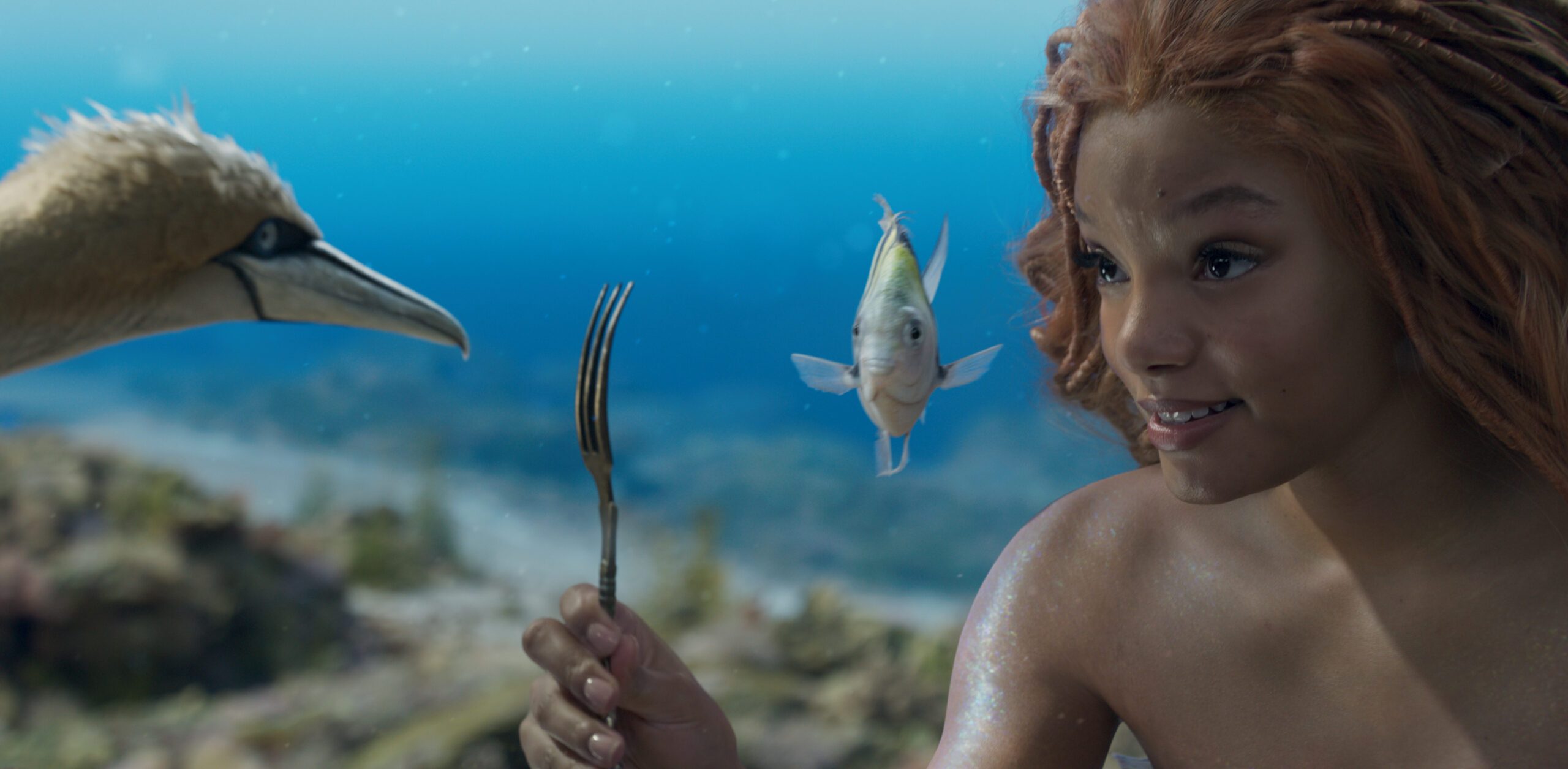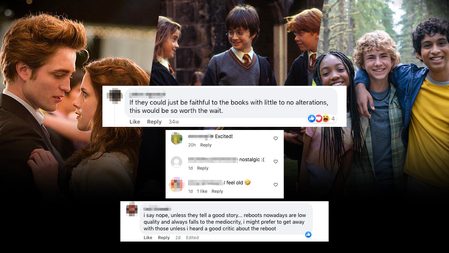SUMMARY
This is AI generated summarization, which may have errors. For context, always refer to the full article.

No one wants to admit their disappointment after having anticipated a film for years. But as the credits roll after Rob Marshall’s live-action adaptation of The Little Mermaid, one can’t help but feel a pang of guilt, maybe even shame, at having to admit its mediocrity. For all the hullabaloo in the last few years of development, everything from the racism Halle Bailey had to endure, to shallow critiques of Melissa McCarthy’s drag-inspired makeup, The Little Mermaid might be at-times beautiful, but as a whole is just fine. Which is is another way to say that it is ultimately unnecessary.
First published as a short story in 1837 by Danish author Hans Christian Andersen, The Little Mermaid was adapted in 1989 into an animated feature. Directed by John Musker and Ron Clements, the magic of this first translation into cinematic language was its limpid simplicity. Ariel, the youngest princess of her widowed father Triton’s underwater kingdom, is fascinated with the world of the humans. When curiosity gets the best of her, she finds herself falling in love with a prince, whom she rescues from a storm. Triton attempts to sequester Ariel from land to prevent her from suffering the same fate as her mother, but ends up pushing her towards the arms of the sea-witch Ursula. Lovestruck and desperate to get away from her underwater life, Ariel trades her voice and her fins away for three days of life on land, time which she must use to receive true love’s kiss from Eric or else she will belong to Ursula. Through the help of the crab Sebastian, the seagull Scuttle, and her fishy best friend Flounder, Ariel and Eric fall in love and, by extension, unite the two kingdoms.
Beneath its fairytale coating, The Little Mermaid had layers. It functioned as a portrait of parental protectiveness in the aftermath of complex grief, a theme that isn’t always explored or communicated to children and adolescents. In the years since its release, queer folk have also adopted the work as a paragon of queer isolation — with Ariel’s “Part of Your World” becoming an anthem of queer longing, especially after information regarding Andersen’s queer past resurfaced. In Wesley Morris’ recent review of Rob Marshall’s The Little Mermaid, he makes an inspired observation of how “the animated version was about a girl who wanted to leave showbiz.”
The animated film, widely regarded as the beginning of the Disney Animation Renaissance, understood the push and pull between the world one grows up in and the world one wants to know. Such layers disappear from this predominantly computer-generated adaptation, showing little interest in the minutiae of Ariel’s life. The underwater kingdom is barely depicted, and when it is, it holds neither the grandeur nor the character to be a habitat worthy of staying in. Halle Bailey (of the R&B duo Chloe x Halle) delivers as “the most beautiful voice in the seven seas,” but little is done to introduce the magnificence of her talents nor her deviations from other merpeople within the film.
It doesn’t help that King Triton, played by Javier Bardem, is mostly stoic. Maybe it’s the awkwardness of the computer-generated imagery, but Bardem’s regal rigidity misses the depth of Triton’s care for his daughter altogether. How can we understand Ariel’s longing for escape if we were never introduced to the life she is desperate to leave? Why would we root for her to return to a father and a kingdom who does not seem to love or miss her?
Prince Eric (Jonah Hauer-King), on the other hand, is given a fuller backstory; it is apparent that writer David Magee wanted to create a man worthy of Ariel’s infatuation and eventual sacrifices. Rescued from a shipwreck by Queen Selina (the ever-reliable Noma Dumezweni), Eric struggles with the destiny thrust upon him as the (white and English) successor of a Carribean kingdom, when his desires point him to exploration of the seven seas. The world around Eric is colorful — with trades, festivals, lush forests, and so much more — that it emphasizes the absence of life in Atlantica.
The decision to juxtapose Ariel and Eric’s lives as young royals who have trouble assimilating with their respective worlds make the intensity and speed of their romantic development, at least from Ariel’s vantage point, much more believable, and The Little Mermaid is at its best when the two are onscreen together. Hauer-King, in particular, has a gaze that invites us to see Bailey in a different light, as an object of affection impossible to articulate, the string tethering him to her almost palpable. From looking at world maps together, to Ariel teaching Eric how to say her name in “Kiss The Girl,” their small flirtations are filled with the stuff that melts even the iciest of hearts.
Director Rob Marshall — of Chicago fame and Memoirs of a Geisha infamy — expands the 1989 adaptation in an attempt to flesh out the ecofeminism in the text, with key scenes altered to make Ariel a more active participant in her self-determination and the plot. Muteness here is not treated as disability nor does Bailey treat herself as a victim, but rather it is accepted as everyday fact, presenting Ariel as communicative and intelligent (if a little forgetful due to the curse) as she is underwater. But why remove the sexual implications in “Poor Unfortunate Souls,” when desire is what fuels Ariel’s journey? Why remove the morbid seafood preparations in “Les Poisson,” only for Scuttle (Awkwafina) to snack on a fish that belongs to Ariel’s kingdom, an event that makes the audience ask questions about the ecology?
These decisions are early signs of how The Little Mermaid is unclear with its politics, selective in its ethics, and unsure of who it should lend sentience to. Case in point: in a scene after Ariel rescues Eric from the storm, Triton’s daughters — multiracial and beautiful yet surprisingly devoid of personality — clean up the remnants of the shipwreck, expressing how humans have damaged the coral reef systems in ways that will take thousands of years to recover. Instead of empathizing with the loss of life, Ariel makes a shallow rebuttal about their generalizations of humans. It is dialogue that highlights the naiveté of her worldview, but also posits a clear (and possibly irreconcilable) reason for the separation of these worlds. Why would Ariel want to be with someone who has killed not only her mother but whose people have effectively begun colonizing and invading their waters? Disney repeatedly hints at these problems without delving into its implications, too afraid to make radical political statements for fear of alienating its conservative audiences.
But the biggest crime of The Little Mermaid is its self-seriousness. The 1989 animated film may have dulled the poignancy of Hans Christian Andersen’s fairy tale, sanding down the story about one’s first encounter with the consequences of desire to become palatable to a predominantly white American population, but it at least was campy and fun. But this live-action adaptation of The Little Mermaid is more of an intellectual exercise than a pleasurable experience. While there are moments that teem with life, most of the film is visually dull, at times even dizzying and ill-paced, its attempts at underwater realism seemingly at odds with its fantastical premise. Why ignore the physics of water pressure and motor function when Ariel turns human but maintain the physics of light that keeps key scenes drab and poorly rendered? Why be selective with the creative liberties when there’s an opportunity to amplify the spectacle and the intimacy through them?
The Little Mermaid seems to have been created not for children of today, but for adults attempting to revive their jaded inner child. And it seems that the creativity and the curiosity that made the 1989 animation resonate with all audiences — including the adults who weren’t even Disney’s initial audience — is now stifled by a fear of online reaction. It is understandable considering how protective people can get with work that defines their childhood, but such fear has only neutered the magic and potential of the adaptation. Even worse, for a film centered on romantic and familial love, The Little Mermaid fails to deepen our understanding of what children’s literature expert Roberta Trites defines as the “principles of care” and “cooperative identity formation” crucial to Andersen’s original work.
These lapses are unsurprising given that the film is part of a laundry list of intellectual property revived for profit under the guise of relevance and racial reparations. Such efforts encourage us to measure art purely on its intentions, when in reality it is treated as repackaged content aimed at profiting off of nostalgia. What’s troubling is it still works. When Bailey sings “Part of Your World” for the first time, one cannot help but feel emotional from her sonorous voice and playful expressions. But where else can it imagine the tale to go? The inclusion of new music like “Scuttle Butt” and “Uncharted Waters,” co-created by Lin-Manuel Miranda, offers the closest thing to a risk, but comes off as merely rehashes of Miranda’s previous work from In the Heights and Hamilton.
ArtReview’s Martin Herbert wrote earlier this month about how we are entering the endpoint of revivalism, when people are merely creating copies of past artwork, losing details along the way instead of adding layers and creating new meanings. “Once the snake has fully consumed its own tail, though,” he writes. “What’s next?”
With The Little Mermaid, it seems Disney has no clue, either. – Rappler.com
The Little Mermaid is showing in Philippine theaters now.
Add a comment
How does this make you feel?

There are no comments yet. Add your comment to start the conversation.